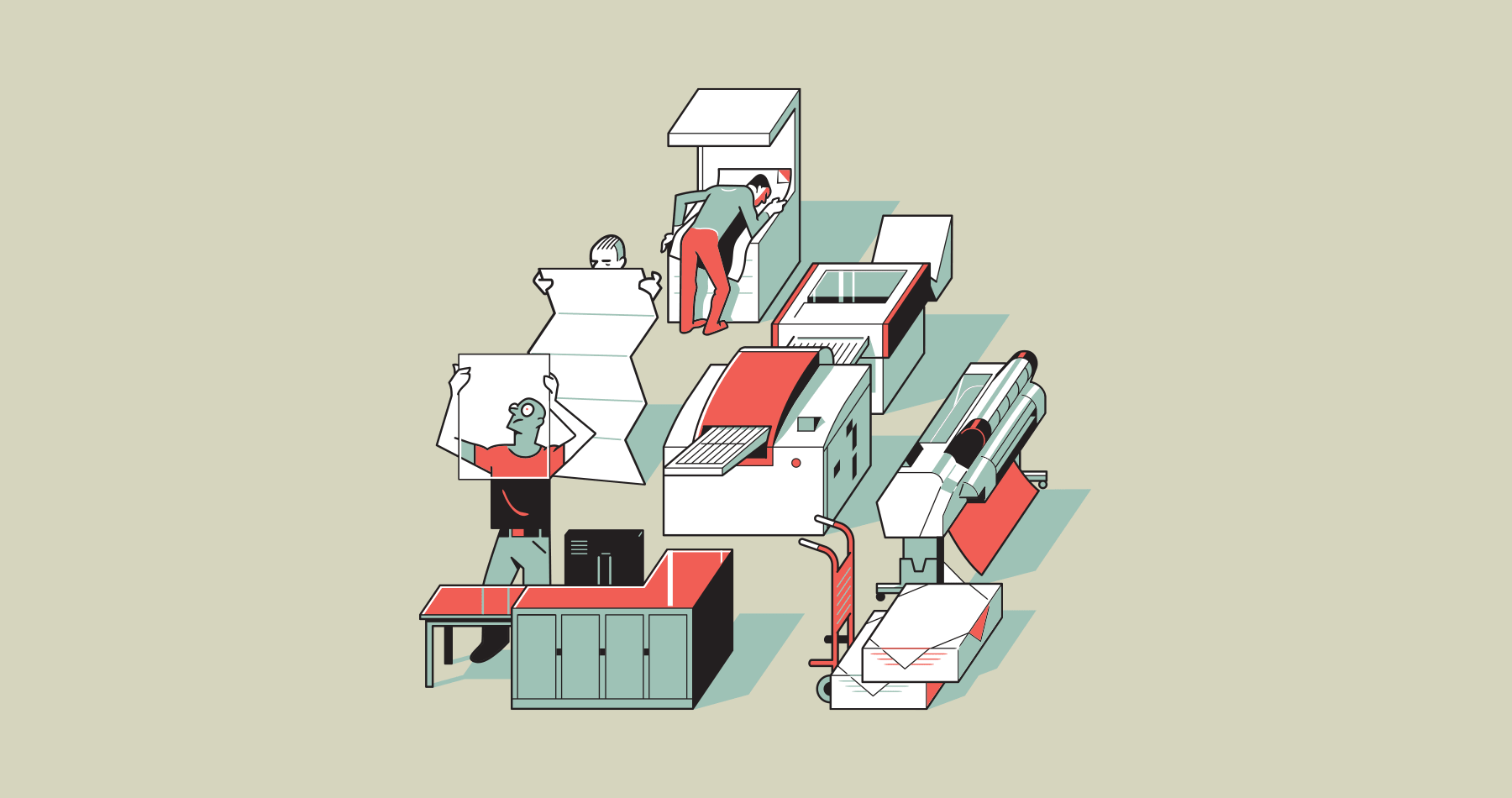Why new generations need to feel the impact
Flexibility. Humility. Perspective. If you are looking for a strategy to define how today’s print companies can persevere and build a business of the future in today’s unprecedented landscape, Mark Friedman says you can start there. Being flexible, having a little humility and finding perspective amid the chaos are all bankable options. But Friedman, director of marketing for the Dietzgen Corporation, says that the industry’s compass forward does not fully center on the pandemic. If you think about it, over the past 25-plus years, everyone, everywhere has been musing about how the business has changed “over the past five to 10 years.” The mantra runs on an endless loop.
“I don’t think it is just the pandemic, although that has certainly accelerated many of the aspects of the business transition we are currently experiencing,” Friedman says. “Without a doubt digital—for everything that the term means—is cutting into what has long been sacred print applications. But print is resilient and an incredibly adaptable medium. So for every application that seems to shrink, another one seems to be expand. It may not use the same technology, the same products or be supported by the same businesses within the industry, but that is part of the evolving story of print.”
As the industry treks forward and a new generation assumes the mantle of responsibility, there must be an inherent value placed on print’s stark contrast to its rival—digital. Print is tangible and long-lasting, while digital messaging is often short lived. Print is personal; digital is superficial and impersonal.
“No matter how personalized a digital communication is, you always know in the back of your mind that it is technology or automation that personalized it,” Friedman says.
“To steer a business through uncertainly requires a team that believes in each other—one willing to take changes, make mistakes, admit their mistakes and still try again.”
— Mark Friedman, Director of Marketing, Dietzgen Corp.
So, in order to be successful and continue to be relevant in the future of print, the industry needs people who are able to see past the current products, applications, processes, workflows, etc. But that strategy does not come without challenges. “To steer a business through uncertainly requires a team that believes in each other—one willing to take changes, make mistakes, admit their mistakes and still try again,” Friedman says. “A team that is willing and has the desire to change and adapt, and to look at things from a different perspective.” Do that and we will come out stronger on the other side.”
When it comes to print, Christopher Siebert says the industry must adopt a continual, proactive drive to re-think fundamental assumptions of how it helps customers reach their target audiences. The president and CEO of Almaden Global says that this drive must be an ever-present strategy, not one contrived during times of crisis only.
“Humans are social and tactile creatures who seek and respond well to new, unique experiences,” Siebert says. “But people are selective, too, and will only invest their time and emotionally connect in trusted situations. Tangible, branded collateral is central to delivering that much deeper, richer experience and forming a bond of trust.”
That starts by defining who you are and what you do up from the jump. More than just a print company, Almaden’s focus is to deliver the brands it serves—some of the most recognizable companies and organizations in the marketplace—via myriad technologies, including print. Its success lies in its ability to blend creativity and execution. “It’s not just about helping our customers bring their branded ideas to life, but also delivering them seamlessly and efficiently at the highest quality across the globe,” Siebert says.

Innovate. Execute. Recruit. Repeat.
To seamlessly deliver what your customers need, when they need it, takes having an open mind to the resources and people needed to make that happen. It also takes innovation. To culturally infuse innovation, all aspects of your company must be aligned to rewarding creativity and risk-taking, and evaluating impact and scaling what works.
“Everything we do is fundamentally aligned with these aspects,” Siebert says. “While we do have some guardrails on decision-making, we seek to empower employees at all levels to think big and different and look for opportunities to continually improve how we deliver value.”
Siebert says as any rapidly-evolving industry, the print world needs people with fundamental aptitude and abilities around creativity and execution. The key is being able to attract people who embody those attributes. For example, universities with solid programs in graphic design and communications are great environments to recruit.
“While we do have some guardrails on decision-making, we seek to empower employees at all levels to think big and different and look for opportunities to continually improve how we deliver value.”
— Christopher Siebert, President & CEO, Almaden Global
“We hire and teach them the technical aspects of what they need to know,” Siebert says.
Denny Shorett, president of Crown Connect, says the print industry will have to take a much different look at the talent and caliber of people needed for the future. He believes there will be little in the future of print that will remain “traditional.”
“The employees we must attract will need to be team players with the ability to think outside the box, offer bright ideas and have the ability to offer constructive feedback,” he says. “Qualified employees will likely demand a higher wage as well.”
With a pandemic still wreaking havoc on every aspect of our lives, the print industry—along with everyone else—is heading into uncharted territory. If there is one consensus that every industry professional can agree on it is that “normal” will be hard to define. With that premise will come a renewed effort on recruiting and educating the industry’s masses.
“Selling print, mailing or other graphic solutions that our industry provides will not be accomplished by selling,” Siebert says. “Education is the (not so) new factor needed if we stand any chance of getting people interested in [what we do].”
Siebert refers to the situation as print’s double whammy. Over the last two-to-three years, just has the industry was beginning to recover from digital as the fix-all solution to replace print, the pandemic hit.
“The employees we must attract will need to be team players with the ability to think outside the box, offer bright ideas and have the ability to offer constructive feedback.”
— Denny Shorett, President, Crown Connect
“This time it will be [harder] to bring print back from its grave,” Siebert says. “It will be a time when we will need to help our customers regain their confidence in their own ability to rebuild their businesses within their marketplace. We will need to partner with them to help them find the right solution, whatever it may be.”
It will be a job for the new stewards of print.
Other recent articles

The Vanishing

Weighing In

We’re OK

The Guide

By The Numbers

